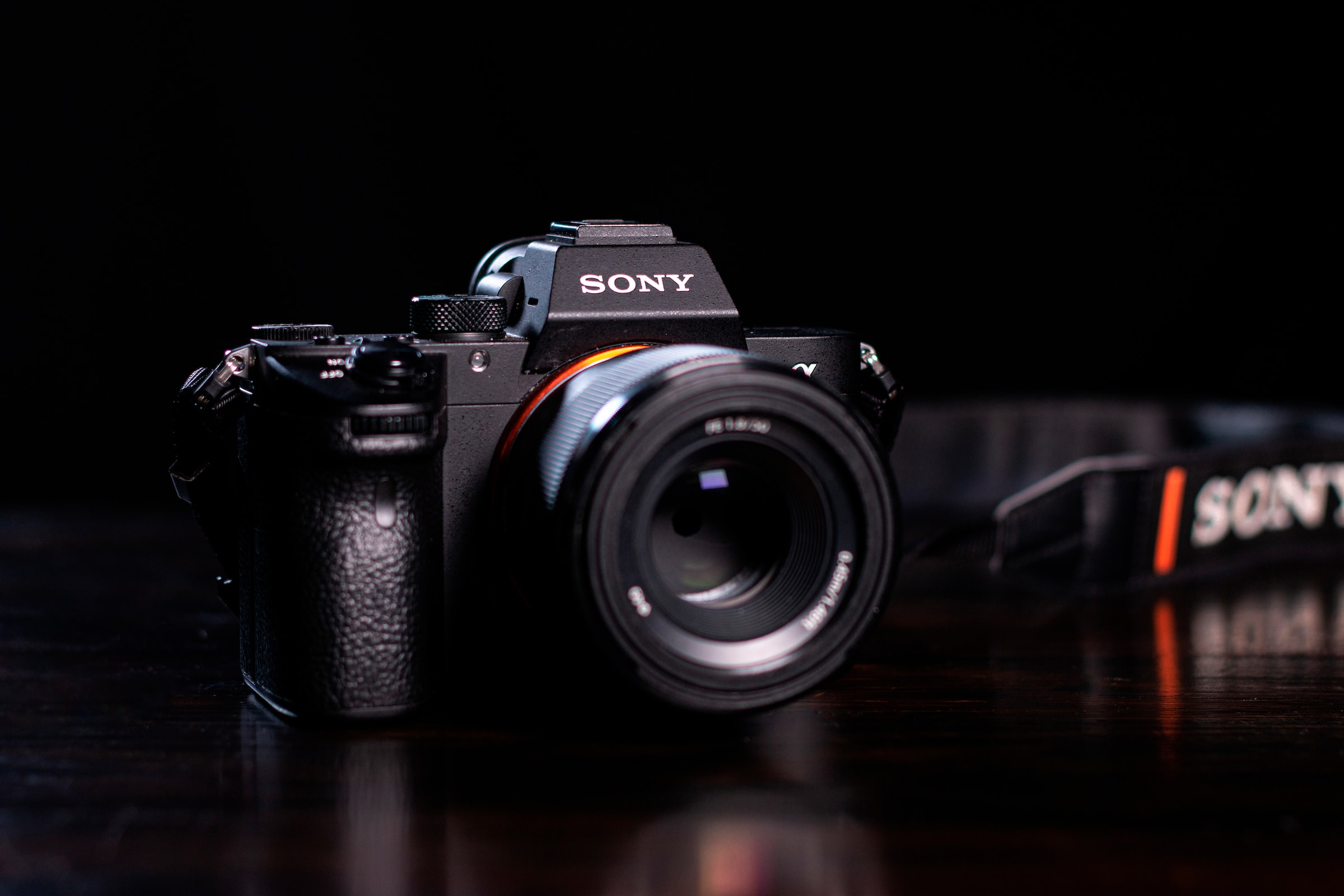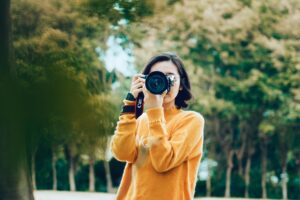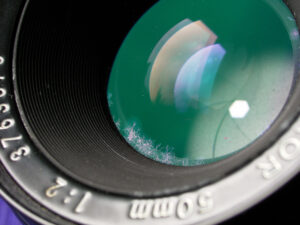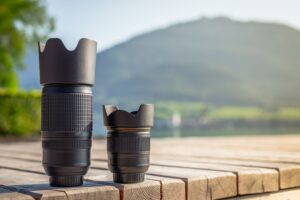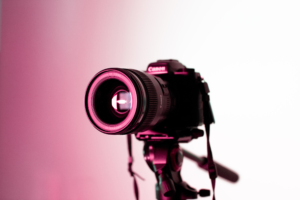You’ve probably heard the term “nifty fifty” and wondered what all the buzz is about. Well, that catchy phrase is actually referring to the 50mm lens! So, what is a 50mm lens good for?
In a nutshell, it’s your go-to lens for versatility, sharpness, and affordability, particularly in low-light situations.
Keep reading, and you’ll discover why many photographers consider this lens an indispensable part of their gear.
| Aspect | Description |
|---|---|
| Type of Lens | Prime Lens |
| Focal Length | 50mm |
| Best For | Portraits, Street Photography, Low Light |
| Common Apertures | f/1.8, f/1.4, f/2 |
| Pros | Sharp, Great in Low Light, Affordable |
| Cons | No Zoom, May Be Tight on Crop Sensors |
1. Low Light Capabilities
Ah, low light—the nemesis of many photographers. Enter the 50mm lens, your new hero. With its impressive low-light capabilities, this lens is a game-changer. Here’s why:
Why the 50mm Lens Excels in Low Light
- Large Aperture: Most 50mm lenses come with large apertures like f/1.8 or f/1.4. This allows more light to hit the sensor, making it ideal for low light conditions.
- Less Flare: The quality of the glass and the lens construction minimizes flare, even when shooting wide open.
- High Shutter Speed: The larger aperture allows you to use faster shutter speeds, reducing the chances of camera shake.
Tip: If you’re new to the world of lenses and how different ones affect the outcome of your photos, check out our guide on how do camera lenses work.
Benefits in Different Scenarios
- Indoor Photography: Capture sharp, well-exposed images in dimly lit rooms.
- Nighttime Photography: Shoot cityscapes and portraits without relying on a flash.
- Concerts and Events: Snap away without worrying about poor lighting conditions affecting your shots.
Whether you’re capturing a moody indoor portrait or shooting stars in the night sky, a 50mm lens is your ticket to crisp, well-exposed photographs.
2. 50mm Lenses—Prime vs Zoom
There are typically two main types of lenses that you’ll encounter as a photographer: prime lenses and zoom lenses. If you’re a beginner, you might be wondering which type of lens will best suit your needs.
Here, we’ll break down the fundamental differences between these two and explain why a prime lens, like the 50mm, often trumps a zoom lens for newbies.
What’s the Difference Between a Prime Lens and a Zoom Lens?
| Feature | Prime Lens | Zoom Lens |
|---|---|---|
| Focal Length | Fixed (e.g., 50mm) | Variable (e.g., 18-55mm) |
| Aperture | Larger (e.g., f/1.8) | Smaller (e.g., f/3.5-5.6) |
| Sharpness | Generally Sharper | Can Vary |
| Weight | Lighter | Heavier |
| Complexity | Easier to Use | More Features, Steeper Learning Curve |
Why Choose a 50mm Prime Lens?
Here are some compelling reasons:
- Simplicity: With a prime lens, what you see is what you get. There are fewer settings to mess around with, making it easier for beginners to focus on composition and framing.
- Quality: Prime lenses are generally sharper than zoom lenses, particularly kit zoom lenses that come bundled with cameras.
- Aperture: Prime lenses often have larger apertures. This not only helps in low light conditions but also lets you achieve that creamy bokeh effect that’s so sought after.
- Lightweight: Less glass and mechanics make for a lighter lens, which is easier to carry around.
- Affordability: While there are expensive prime lenses, a 50mm prime is often more budget-friendly compared to high-end zoom lenses.
When to Consider a Zoom Lens?
- Versatility in Focal Length: If you need to cover a range of focal lengths and can’t switch lenses often.
- Wildlife and Sports Photography: When your subject is at a distance, and you can’t move closer.
However, do keep in mind that zoom lenses often come with smaller apertures, making them less ideal for low light conditions and achieving shallow depth of field. They are also generally heavier and can be more expensive.
Ultimately, for beginner photographers looking to step up their game, a 50mm prime lens often offers the best balance of quality, simplicity, and affordability.
With fewer variables to manage, you can focus more on honing your skills and less on juggling lens settings.
3. Improved Composition
Composition is the cornerstone of great photography. But did you know that the lens you use can actually influence how well you compose your shots?
That’s right! Using a 50mm prime lens can serve as a practical exercise in improving your composition.
The Concept of “Zoom with Your Feet”
You’ve probably heard the phrase “zoom with your feet” before. But what does it mean?
In essence, it’s the act of physically moving closer or farther away from your subject to frame your shot, rather than using a zoom lens to do so.
Why is this Beneficial?
- Intentionality: It forces you to think more about your shot. You have to physically move, analyze angles, and consider what to include or exclude from the frame.
- Perspective: As you move, the relationship between the foreground and background changes, offering you a range of creative possibilities.
- Engagement: Getting physically closer to your subject can result in more intimate and engaging photos.
- Simplification: Without the distraction of variable focal lengths, you can focus more on the basics of good composition—like the rule of thirds, leading lines, and framing.
Real-Life Examples
- Street Photography: Moving closer can capture the expressions of people, making the photograph more compelling.
- Landscape Photography: Stepping back can bring more elements into your frame, adding layers and depth to the scene.
- Portrait Photography: Changing your distance and angle can drastically alter the mood and style of your portraits.
Zoom Lens vs 50mm for Composition
| Aspect | Zoom Lens | 50mm Prime Lens |
|---|---|---|
| Ease of Use | Convenient but can be lazy | Forces you to move and think |
| Creative Control | Variable, depends on settings | High, due to manual framing |
| Learning Curve | Easier but less instructive | Steeper but more rewarding |
“Zooming with your feet,” leads to more intentional and creative photography. It’s an excellent tool for honing your compositional skills, as it compels you to engage more deeply with your surroundings.
So the next time you’re framing a shot, remember: your feet can be just as effective as any zoom function!
4. Shooting in Low Light
One of the most challenging scenarios in photography is shooting in low light. Whether you’re capturing a candle-lit dinner or a night-time cityscape, insufficient light can make or break your photo.
But fear not, the 50mm prime lens is your trusty companion for these tricky situations. How? It all boils down to its fast aperture.
The Magic of Fast Aperture
In simple terms, aperture is the opening in your lens that allows light to enter the camera. The larger the opening (or the smaller the f-number), the more light comes in.
A 50mm lens often comes with a fast aperture like f/1.8 or f/1.4, making it a low-light powerhouse.
Advantages of a Fast Aperture in Low Light
- No Need for Flash: A large aperture lets in more light, often eliminating the need for artificial light sources like a flash.
- Natural-Looking Photos: Because you can rely on available light, your photos retain a more natural and ambient feel.
- Faster Shutter Speed: More light means you can use faster shutter speeds, reducing the risk of blurry photos due to camera shake.
- Creative Control: A large aperture also allows for a shallow depth of field, so you can creatively isolate subjects from their backgrounds.
Pro Tip: To get the hang of aperture settings, check out our article on what do camera lens numbers mean.
Ideal Scenarios for Low Light Shooting with a 50mm Lens
- Indoor Events: From weddings to concerts, capture the mood without the harshness of a flash.
- Street Photography at Night: Embrace the city lights and the shadows they cast.
- Astrophotography: Yes, you can even capture the stars with a 50mm and its large aperture!
| Low Light Scenario | Aperture Setting | Why It Works |
|---|---|---|
| Indoor Portraits | f/1.8 or f/1.4 | Blurs background, focuses on subject |
| Night Street Scenes | f/2.8 | Balances depth of field and light |
| Star Photography | f/1.4 | Captures maximum light |
5. Achieving Beautiful Bokeh
If you’ve ever admired portraits where the subject is in sharp focus while the background is a dreamy blur, you’ve been captivated by bokeh.
This visually pleasing effect isn’t just for professional photographers. With a 50mm lens, you too can achieve stunning bokeh and create images that look like they belong in a gallery.
What is Bokeh?
Bokeh is a Japanese term that refers to the aesthetic quality of the out-of-focus areas in a photograph.
It’s all about how your lens renders the points of light that are not in focus. Good bokeh turns these areas into soft, blended, and pleasing shapes.
How Does a 50mm Lens Help?
- Shallow Depth of Field: The large aperture (like f/1.8 or f/1.4) creates a shallow depth of field, isolating your subject and blurring the background.
- Quality of Blur: The construction and optics of a 50mm lens generally produce smoother, creamier bokeh compared to kit lenses.
- Control: With manual aperture control, you can decide the extent of the bokeh effect.
Heads Up: For more on depth of field, dive into our article about what makes a lens good for bokeh.
Tips for Achieving Great Bokeh
- Open Wide: Use the widest aperture setting available (e.g., f/1.8 or f/1.4).
- Get Close: The closer you are to your subject, the more pronounced the bokeh will be.
- Mind the Background: For more interesting bokeh, look for complex lighting conditions like dappled sunlight or city lights.
Bokeh in Different Photography Genres
| Photography Genre | How to Use Bokeh |
|---|---|
| Portrait Photography | Isolate the subject from the background, making them the focal point. |
| Macro Photography | Use bokeh to simplify a busy background and draw attention to tiny details. |
| Street Photography | Add an artistic touch to everyday scenes by blurring distracting elements. |
In photography, bokeh is like the icing on the cake. It adds an artistic touch that elevates your images to a professional level.
With a 50mm lens, achieving beautiful bokeh isn’t just possible; it’s remarkably easy.
6. Super Sharp at All Stops
Sharpness in photography is often a top priority, and there’s nothing more frustrating than capturing what you think is a perfect moment, only to find the image is soft or blurry.
Enter the 50mm prime lens, a tool that excels in delivering tack-sharp images across a range of aperture settings. Let’s dive into why the 50mm is a sharpness superstar.
Why is the 50mm Lens So Sharp?
- Optical Design: The simple construction of a prime lens, with fewer glass elements, often results in better optical quality compared to zoom lenses.
- Large Aperture: At wide-open settings like f/1.8 or f/1.4, the 50mm lens can capture a tremendous amount of detail.
- Quality Glass: High-grade materials reduce distortions and aberrations, contributing to overall sharpness.
Tip: For more on lens quality and its impact, read our guide on how to check camera lens quality.
Sharpness Across Aperture Ranges
Even when you stop down the lens to smaller apertures like f/8 or f/11, the 50mm maintains excellent sharpness.
This is great for landscape photography where you need both the foreground and background in focus.
Comparing Sharpness: 50mm vs Kit Lens
| Aspect | 50mm Prime Lens | Kit Lens (e.g., 18-55mm) |
|---|---|---|
| Sharpness at Wide Aperture | Excellent | Good, but not as sharp |
| Sharpness at Small Aperture | Remains Sharp | May Show Softness |
| Edge-to-Edge Sharpness | Consistently Good | Varies |
Practical Applications
- Portraits: Capture every facial expression and detail in sharp focus.
- Product Photography: Showcase products in high definition, capturing every texture and feature.
- Architectural Photography: Emphasize the straight lines and intricate details in buildings.
So, if you’re after razor-sharp images that make every pixel count, the 50mm prime lens should be a top contender in your photography toolkit.
7. Traveling Light
Travel photography is all about capturing the essence of a place, and what better way to do that than with a lens that’s as versatile as the places you’ll go?
When you’re backpacking through cities or hiking up mountains, every ounce counts. The 50mm prime lens shines in this department—it’s your perfect travel buddy.
Why the 50mm Lens is Ideal for Travel
- Lightweight: Unlike hefty zoom lenses, a 50mm lens is generally much lighter and more compact. You can easily carry it around all day without feeling weighed down.
- Less Gear to Manage: With a 50mm, you can often leave extra lenses and even a flash at home, simplifying your gear and freeing you to focus on capturing the moment.
- Quality: As we’ve discussed, the 50mm lens offers sharp, high-quality images, meaning you won’t have to compromise on photo quality while traveling light.
Travel Tip: Packing light doesn’t mean skimping on lens care. Make sure you know how to store camera lenses properly even when you’re on the move.
The 50mm Lens in Various Travel Scenarios
- Cityscapes: Capture the essence of a bustling city, from towering skyscrapers to intricate details on historical buildings.
- Landscapes: Bring out the beauty of natural vistas without lugging around a bag full of lenses.
- Portraits: Whether it’s a charming local or your travel companion, the 50mm is great for capturing personalities.
| Travel Scenario | Why the 50mm Works |
|---|---|
| Quick Street Shots | Fast autofocus and aperture allow for quick, candid shots. |
| Versatility | Well-suited for both portraits and landscapes. |
| Low Light Conditions | Large aperture is ideal for capturing scenes in varying lighting. |
The 50mm lens is like the Swiss Army knife in your toolkit. It’s compact enough to take everywhere and versatile enough to capture almost anything.
8. Less Visibility for Candid Shots
Candid photography is all about capturing spontaneous moments as they unfold—be it a child’s innocent smile or an elderly couple holding hands. These are the shots that tell true stories and capture real emotions.
However, the last thing you want is to become the center of attention and disrupt the natural flow of events. This is where the 50mm lens comes in handy, allowing you to snap away discreetly.
Why 50mm for Candid Photography?
- Compact Size: The 50mm lens is generally smaller and less intimidating than big zoom lenses. People are less likely to notice you, making it easier to capture candid shots.
- Quiet Operation: Many 50mm lenses come with quiet autofocus motors. Less noise means fewer heads will turn in your direction.
- Fast Aperture: With a large aperture like f/1.8 or f/1.4, you can capture great shots even in low light, reducing the need for a flash that could attract attention.
Practical Tips for Candid Photography with a 50mm Lens
- Blend in: Dress like a tourist or a regular attendee at events to avoid drawing attention.
- Be Quick: Use the fast aperture and autofocus to your advantage; compose your shot and capture it quickly.
- Use Natural Frames: Position yourself so that natural elements like trees or buildings frame your subject, allowing you to be less conspicuous.
Situations Ideal for Candid Photography with a 50mm Lens
- Family Gatherings: Capture the joy and intimacy of family interactions without anyone posing for the camera.
- Street Photography: Document life as it happens on the streets, from vendors to passersby.
- Events and Festivals: Whether it’s a local fair or a music festival, the 50mm lens lets you capture the atmosphere and excitement.
| Scenario | Why 50mm Works |
|---|---|
| Family Portraits | Less intrusive, more natural shots. |
| Public Events | Compact size allows for discreet shooting. |
| Intimate Moments | Large aperture captures emotion even in low light. |
The 50mm lens is a stealthy tool that lets you document life’s unscripted moments without being noticed. Its compact size, quiet operation, and fast aperture make it an excellent choice for candid photography.
9. Versatility of the 50mm Prime Lens
If you were stranded on a deserted island and could only have one lens with you, the 50mm prime lens would be a wise choice.
Why? Because its versatility is second to none. Let’s explore how this lens performs in various genres of photography.
Portrait Photography
The 50mm lens excels in portrait photography. Its large aperture creates a shallow depth of field, beautifully blurring the background while keeping your subject in sharp focus.
Key Benefits:
- Natural Perspective: The lens closely mimics human vision, resulting in realistic, undistorted portraits.
- Bokeh: The lens’s fast aperture allows for dreamy background blur, adding a professional touch to your portraits.
Portrait Pro: To get the most out of your portrait shots, you might find our article on why use a lens hood helpful. A lens hood can minimize flare and increase color saturation.
Landscape Photography
Yes, you read that right! A 50mm lens can also be used effectively for landscape photography. Its sharpness and clarity make it an excellent option for capturing sweeping vistas.
Key Benefits:
- Sharpness: Capture crisp, detailed landscapes, from foreground to horizon.
- Ease of Use: With a fixed focal length, you can focus more on composition than fiddling with zoom.
Street Photography
The 50mm lens is a popular choice among street photographers. Its compact size and fast aperture make it ideal for capturing life as it unfolds on the streets.
Key Benefits:
- Discreet: Its small size allows you to shoot without drawing attention.
- Fast Aperture: Useful for capturing quick moments even in low light conditions.
| Photography Genre | Why 50mm Works |
|---|---|
| Portrait | Natural perspective, great bokeh |
| Landscape | Sharp across the frame |
| Street | Compact and quick |
10. Affordability
Photography can be an expensive hobby, especially when you start diving into the world of lenses. However, the 50mm lens stands out as an anomaly—it offers incredible performance without draining your wallet.
If you’re a beginner looking to step up your photography game or a pro on a budget, the 50mm lens is a budget-friendly option that doesn’t skimp on quality.
Why is the 50mm Lens So Affordable?
- Simpler Design: Prime lenses like the 50mm have fewer elements and moving parts, making them less expensive to manufacture.
- High Demand: The 50mm lens is a popular choice, leading to economies of scale in production, which lowers the cost.
- Older Models: Given the lens’s long history, older but still excellent models can be found at reduced prices.
Money-Saving Tip: If you’re considering buying a lens on a budget, our article on should I buy used camera lenses offers valuable insights into the pros and cons of second-hand options.
Options for Every Budget
- New Lenses: Even brand-new 50mm lenses are relatively inexpensive, especially when compared to zoom or specialized lenses.
- Used Lenses: The second-hand market is rich with 50mm lenses in excellent condition, offering even more significant savings.
- Off-Brands: Manufacturers other than Canon and Nikon also offer high-quality 50mm lenses at a fraction of the cost.
| Lens Condition | Expected Price Range |
|---|---|
| New | $100 – $400 |
| Used | $50 – $300 |
| Off-Brand | $70 – $250 |
FAQs
What’s the Ideal Shooting Distance for a 50mm Lens?
The 50mm lens is versatile, but it’s especially good for subjects that are 3 to 10 feet away. It’s ideal for portraits and street photography where you want to be close to the action.
Is a 35mm Lens Superior to a 50mm Lens?
The 35mm lens provides a wider angle, making it better for capturing landscapes or large groups. However, the “better” lens depends on your specific needs and what you intend to photograph.
Are There Any Drawbacks to Using a 50mm Lens?
The 50mm lens is not a zoom lens, so you’ll need to physically move closer or further away from your subject. This could be a limitation for some types of photography.
Is it Necessary to Have Both a 50mm and a 35mm Lens?
Having both can be beneficial. The 35mm is great for landscapes and wide shots, while the 50mm excels in portraits and low-light situations. Your needs will dictate whether both are necessary.
Can Group Photos Be Captured with a 50mm Lens?
Yes, but with limitations. A 50mm lens can capture group photos but may require you to step back to fit everyone in, possibly compromising on intimacy and detail.
Should I Opt for a 50mm or an 85mm Lens?
The 85mm lens is generally better for professional portraiture, providing more flattering compression. However, the 50mm lens is more versatile and budget-friendly.
For Street Photography, Should I Use a 35mm or 50mm Lens?
Both are solid choices, but the 35mm offers a wider field of view, capturing more of the scene. The 50mm provides a more focused perspective that isolates subjects better.
Is Zooming Out Possible with a 50mm Lens?
No, the 50mm is a fixed focal length lens, commonly known as a prime lens. To change your composition, you’ll have to physically move closer or further away from your subject.
Can a 50mm Lens Be Used on a Full-Frame Camera?
Absolutely, a 50mm lens can be used on both crop sensor and full-frame cameras. On a full-frame camera, you’ll get a true 50mm perspective, offering more of the scene in the frame.
Conclusion
There’s a reason the 50mm lens is often dubbed the “nifty fifty.” It’s a must-have for photographers, whether you’re just starting out or have years of experience under your belt.
This lens offers a winning combination of versatility, excellent low-light capabilities, and above all, affordability.
So, what are you waiting for? If you don’t already own one, it’s high time to consider adding the 50mm prime lens to your photography arsenal.


